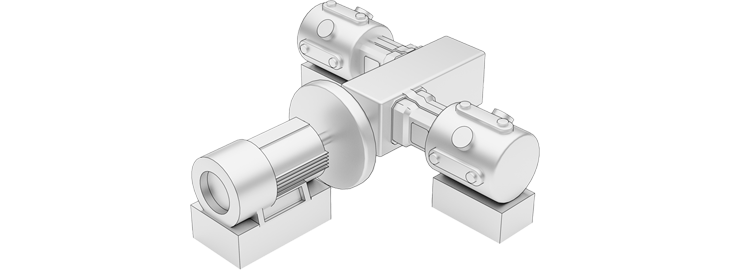Explained: how and when to monitor vibration and rod displacement
Reciprocating compressors are among the most critical machinery in industries such as (petro)chemical, power and oil and gas. As opposed other rotating machinery, reciprocating compressors are very maintenance-demanding. Therefore it is crucial to have advanced monitoring systems in place to monitor various essential mechanical parameters, such as vibration and rod drop. This application note shows how to configure a setup to monitor vibration and rod drop on a typical 2-cylinder reciprocating compressor, and combine these signals for deeper machine insights.
Vibration
Vibration measurements on reciprocating compressors prove to be difficult due to the natural mechanical movement of these compressors. However, monitoring vibration on various points on the machine is crucial to gain machine insights in order to maintain a stable process. These points include casing vibration (accelerometer) and crosshead vibration (accelerometer), as seen in figure 1.
Read more about vibration measurements »
Vibration sensors
Accelerometers are used to measure casing vibration on reciprocating compressors. A sensor is positioned at both the driven end and the non-driven end (figure 1).
Another accelerometer is used to measure crosshead vibration and should be placed above the crosshead (figure 1).
Read more about vibration sensors »
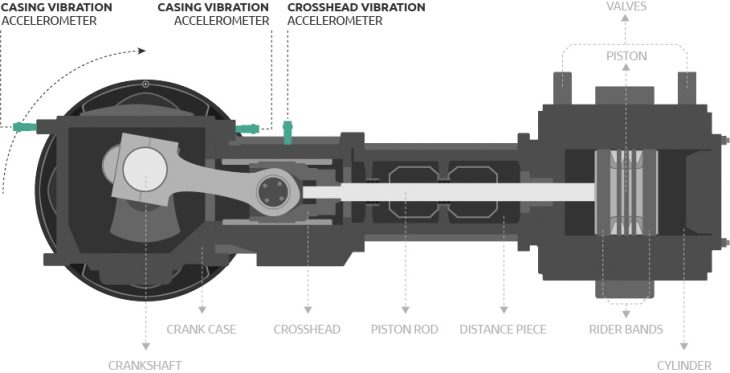
Transmitter-based protection and monitoring; VibroSmart (VSV301) module
The sensors that are used to generate the vibration data are connected to the VibroSmart (VSV301) module; a transmitter-based (DIN-rail) two-channel vibration protection and monitoring system. This system is designed for scalable and advanced monitoring and protection of (critical) rotating machinery, including reciprocating compressors. As a stand-alone system the VibroSmart provides two channels, but due to its scalability multiple modules can be connected to suit any application.
Rod displacement / rider band wear
Rider bands are critical components that support the piston while moving through the cylinder of the reciprocating compressor. They wear out over time, which results in the vertical displacement of the piston and piston rod. To prevent damage to the piston and cylinder wall, the wear of these rider bands should be monitored. As measuring the rider band wear directly is difficult due to the high pressure in the cylinder chamber, the vertical displacement of the piston rod is measured instead.
Read more about rod drop measurements »
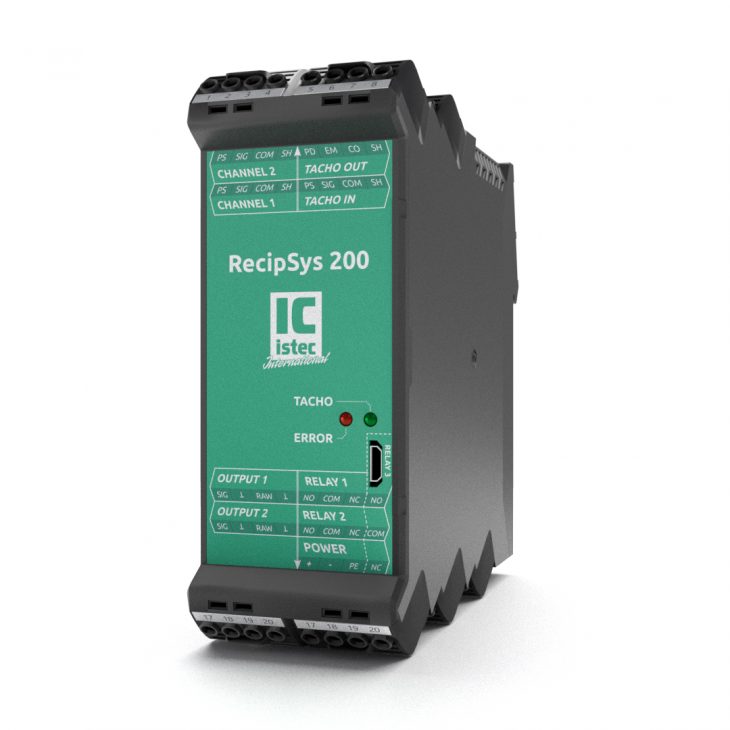
Transmitter-based monitoring; RecipSys 200
The RecipSys 200 is a compact monitoring system (DIN-rail) for reciprocating compressors and provides the monitoring of riding band wear, eliminating the need for periodic shutdowns for manual inspections.
Phase reference sensor
The RecipSys 200 uses a phase reference sensor (or phase trigger) to measure the rod position at a specific point of the cycle, making it much more accurate than an overall measurement (figure 2).
Rod displacement sensor
A proximity probe is used to measure the vertical displacement of the piston rod. As the rider bands wear down the piston rod drops subsequently (figure 2).
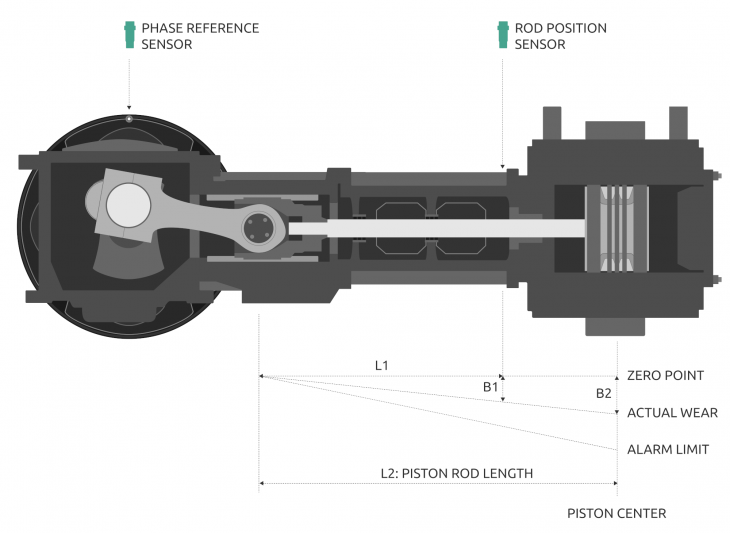
Application
Measuring vibration and rod displacement on a 2-cylinder reciprocating compressor.
A stand-alone RecipSys 200 module has two inputs for rod drop signals and one tachometer input, which means that one module is required for a 2-cylinder compressor. Regardless of the compressor configuration, only one phase reference sensor is needed for triggered piston rod monitoring (figure 3).
As monitoring casing vibration (2x accelerometer) and crosshead vibration (2x accelerometer) requires a total of four sensors, two VibroSmart modules are required. The tachometer input signal of the VibroSmart module can be used to connect a phase reference sensor and filter a specific vibration frequency band, which can be related to the rotational speed of the reciprocating compressor.
As both the RecipSys 200 and the VibroSmart (VSV301) are transmitter-based systems, they are easily scalable to suit any configuration. The data from both systems can be integrated in one analysis platform.
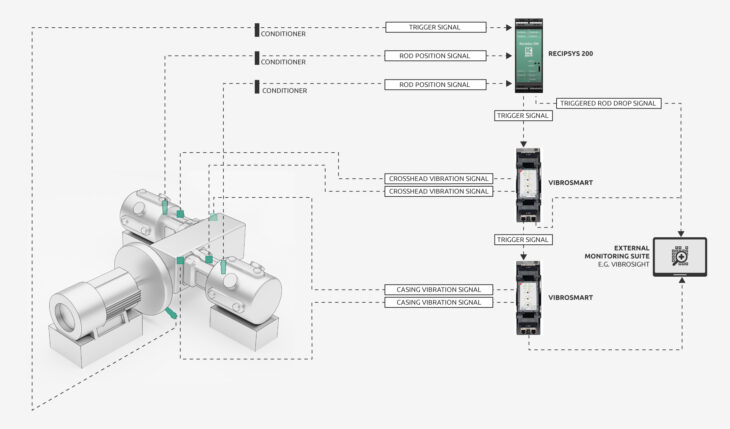
Data analysis
Both the triggered rod drop output signals from the RecipSys 200 modules and the vibration data from the VibroSmart modules can be send to the (optional) VibroSight® software platform; an external monitoring suite to analyse both the vibration and rod position data. Furthermore, the VibroSight® provides extensive analysis options to identify excessive vibrations and determine its cause(s).

